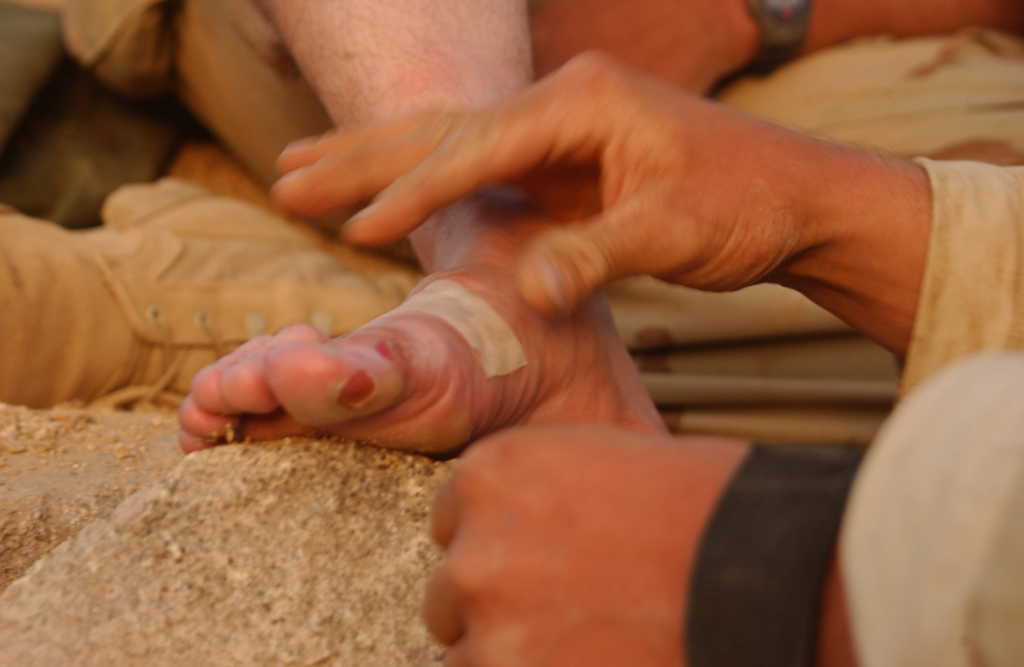What is Chafing?
The term chafing when used by athletes and racers mostly refers to a skin irritation caused by either skin to skin rubbing or skin to fabric during an athletic event. Common places for this rubbing to occur is between the thighs, back of the heels, between love handles, under the armpit, nipples (for a man), or around the sports bra for a woman. Although any place where the skin is rubbing can become a spot to chafe.
Obstacle racers and mud runners are at a higher risk of chaffing and blisters than some other sports due to the water and mud thrown in the course, often causing more friction in those tender spots. Think sandpaper rubbing against your skin. All of this causes obstacle racers and mud runners to think more carefully when choosing a race day outfit.
How to Spot Chafing
The most common symptom is a painful burning or stinging feeling at the chafed spot. You can spot it by seeing a small red spot or a rash in common cases. In severe cases, the friction can damage the several layers of skin. In the most extreme cases, scarring can happen from damage to tissue.
How to Avoid Chafing
However, in most cases, chafing is totally avoidable! There are many ways to avoid chafing during a race from what you wear, how it fits, and what materials you have on. In obstacle racing as with other endurance events, several products are made to help combat chafing by reducing the friction on your skin.
Avoid
- Too loose clothing
- Too tight clothing
- Non-wicking fabrics
- Shoes that are too tight or rub your heel
- Gore-tex shoes
Prevention – Clothing
The best way to avoid chafing is preparing for it ahead of time. When choosing your race day outfit and correct shoes consider the tips above to avoid chafing before it begins. If you know your inner thighs are an issue for chafing choose long smooth compression shorts, capris, or long tights with flat seams to decrease friction.
Avoid baggy cotton shirts which will hang and rub during an event, instead opt for a wicking synthetic fabric that will shed mud and water. For socks look for a wool sock or other moisture wicking sock from an outdoor retailer.
Prevention – Lube Up
Sometimes skin on skin contact is unavoidable and even after taking all the proper measures with clothing there still might be one or two hot spots on your body. Luckily, for years companies have been making various lubes to help cut friction down before it even starts.
Popular lubes like, Body Glide, Trail Toes, or other anti-chafing products come in either a tub or a roll on much like deodorant. Both are applied before an event at the troublesome area or areas. When you run the lube will rub against the fabric or your skin decreasing friction from forming. It can also be used for feet to help prevent blisters.
Treatment
Sometimes chafing just happens. In extreme weather conditions or long extreme endurance events, chafing can just be a by-product of racing. The best plan of action after chafing happens is gently clean the area post-race with a warm water and liquid scent-free antibacterial soap, much like you would clean a new tattoo, and pat dry. Once clean, treat with an antibiotic cream in bad cases and avoid excessive rubbing in that spot until the wound is healed.



Prevention – Remember to not forget. Forgot Glide yesterday. Paid for it. Ouch.